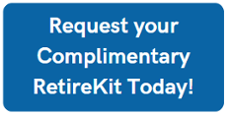As the year draws to a close, it is imperative to consider strategies that could significantly mitigate your tax liabilities for the year 2023. Amidst the busy autumn season, it is crucial not to overlook the potential tax-saving opportunities that these final months offer.
Here, we delve into three essential actions CME Group employees can take to optimize their financial profile before the year's end.
1. Implementing Tax-Loss Harvesting Strategies
Tax-loss harvesting is a legitimate and IRS-sanctioned tactic designed to reduce your taxable income. It involves divesting from underperforming investments, such as stocks, bonds, and exchange-traded funds (ETFs), to counterbalance taxes due on other capital gains and income. While this method does not erase taxes, it effectively defers them, which could be advantageous for many investors.
Given the complexities of tax-loss harvesting, it is advisable to consult with a fiduciary financial advisor. Such professionals are equipped to ascertain whether this strategy aligns with your individual financial circumstances.
2. Maximizing Contributions to Retirement Accounts
Contributing to traditional IRAs and 401(k)s are time-tested methods for not only preparing for retirement but also for diminishing your current tax burden. If you have not yet reached the contribution threshold for the year, there is still an opportunity to contribute and thereby reduce your taxable income for 2023.
For this year, the contribution limits are as follows:
- Traditional IRA: $6,500, increasing to $7,500 for individuals aged 50 and above.
- 401(k): $22,500, surging to $30,000 for those 50 and older.
While these figures pertain to personal contributions to a 401(k), the aggregate limit, inclusive of employer contributions, is $66,000 for 2023. It's also pertinent to note that Roth IRAs operate with the same contribution caps; however, they feature after-tax contributions, leading to tax-free distributions under qualifying conditions.
3. Reevaluating Your Tax Filing Status
A common oversight is to maintain a consistent tax-filing status without considering its impact on your tax obligations. Various filing statuses carry different advantages and disadvantages, and for certain married individuals, filing separately might yield financial benefits.
Due to the intricate nature of these classifications, it is recommended to discuss your particular situation with both your financial advisor and accountant to ensure that your filing status is optimized for your specific financial landscape.
The overarching message here is the importance of proactive engagement with your fiscal health. Comparable to maintaining our physical well-being, financial vigilance is a continuous endeavor. The comparison is apt; just as we are routinely reminded to tend to our health, so too should we heed the persistent internal prompt to safeguard and enhance our financial standings. 

For CME Group professionals nearing retirement or already retired, understanding Qualified Charitable Distributions (QCDs) can offer a significant tax advantage. After reaching age 70½, you have the option to donate up to $100,000 annually directly from your IRA to a qualified charity. Not only does this satisfy the Required Minimum Distribution (RMD) without the funds being added to your taxable income, but it also can lower your Adjusted Gross Income (AGI), potentially reducing the taxability of Social Security benefits and decreasing Medicare premiums. This tactic has become increasingly relevant as tax reforms have altered the landscape of deductions.
Featured Video
Articles you may find interesting:
- 8 Tenets of Choosing a Mutual Fund
- Use of Escrow Accounts: Divorce
- Section 303 Stock Redemption Buy-Sell Agreement
- Medicare Open Enrollment Is Here: How Are Costs Changing for 2023?
- 2022 High Net Worth Tax Planning
- Policy Roadmap
- Section 179 Deductions
- Learn About the Path to Retirement
- Contemplating Change: 7 Key Factors When Considering a Transition from Your Company
- How Are Workers Impacted by Inflation & Rising Interest Rates?
- Lump-Sum vs Annuity and Rising Interest Rates
- Advice for Retirees Trying to Survive a Bear Market
- 5 Most Important Things to do Before Leaving Your Company
- Internal Revenue Code Section 409A (Governing Nonqualified Deferred Compensation Plans)
- 8 Tenets of Choosing a Mutual Fund
- Use of Escrow Accounts: Divorce
- Section 303 Stock Redemption Buy-Sell Agreement
- Medicare Open Enrollment Is Here: How Are Costs Changing for 2023?
- 2022 High Net Worth Tax Planning
- Policy Roadmap
- Section 179 Deductions
- Learn About the Path to Retirement
- Contemplating Change: 7 Key Factors When Considering a Transition from Your Company
- How Are Workers Impacted by Inflation & Rising Interest Rates?
- Lump-Sum vs Annuity and Rising Interest Rates
- Advice for Retirees Trying to Survive a Bear Market
- 5 Most Important Things to do Before Leaving Your Company
- Internal Revenue Code Section 409A (Governing Nonqualified Deferred Compensation Plans)
In summary, as the year comes to a close, taking calculated financial steps is not just beneficial—it's necessary for CME Group professionals. By considering tax-loss harvesting, maximizing your retirement contributions, and ensuring your filing status is most beneficial for your situation, you are positioning yourself for a more secure financial future and potentially easing your tax burden in the process.
Preparing for your taxes as the year winds down can be likened to a captain preparing a ship for a long voyage. Just as a captain uses the calm before the storm to optimize the ship's readiness—checking the rigging, mapping the course, and storing provisions—so should you fortify your financial vessel. Consider tax-loss harvesting as trimming your sails; it allows you to maneuver through turbulent market winds, using losses to your advantage to offset taxable gains. Maximizing your CME Group retirement contributions is akin to stowing away provisions in the hold, ensuring you have enough resources for the journey ahead while lightening the load of current taxable income. Lastly, evaluating your filing status is like choosing the right crew; selecting the most capable setting ensures a smooth sail through the choppy seas of tax liabilities, potentially leading to more favorable winds and calmer waters as you navigate the fiscal ocean.
/General/General%2011.png?width=1280&height=853&name=General%2011.png)



-2.png?width=300&height=200&name=office-builing-main-lobby%20(52)-2.png)












-2.png)









